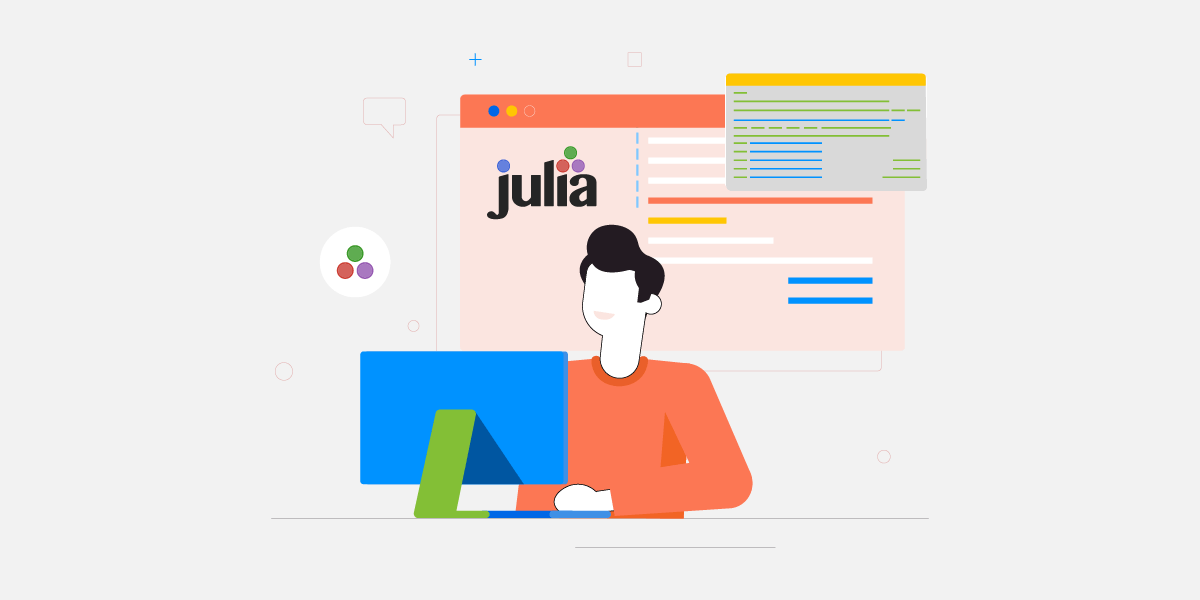Introducing Julia – The Top Programming Language for Machine Learning Development
Machine learning is changing the landscape of technology world like no other technology could.
From Facebook to Netflix, Amazon, Siri, and Google Maps, the technology is fueling businesses with ample of data-driven prediction models and solutions. It is enabling them to engage users with customized services and optimizing their processes to earn higher ROI – something that can be validated by the following statistics:-
- As per the Data Dilemma Report, 12.5% of staff time goes in data gathering and management. This time, which can be saved by automating this process via Machine learning.
- Amazon lowered down the ‘Click-to-ship’ time by 225% with the help of ML.
- Netflix uses Machine Learning to curate and deliver content that users want to see.
Now, while we have taken a glance of what Machine learning is doing for different brands and industries, it is imperative to turn towards the process of how to integrate machine learning into mobile apps and other software.
When talking about languages behind ML development, there are various programming languages that have enjoyed stardom and contributed their share in the rising market for Machine-Learning-as-a-Service (MLaaS) – the one that is predicted to witness growth at a CAGR of 43% between 2019-2024.
However, one language that has emerged out as the best solution for building intelligent apps is Julia. The one we will be talking about today.
Julia
Released in 2012, Julia is a high-level general-purpose, dynamically-typed, open-source programming language used for performing numerical analysis and high-end computations.
Julia offers multiple set of features, including built-in package manager, multiple dispatch, support for parallel and distributed computing. However, one thing that makes it most popular in the market is that it is the perfect blend of C, Python, Ruby, MATLAB, and R.
Meaning, it enables Machine learning developers and data scientists to enjoy the speed of C with the dynamism of Ruby, usability of Python, statistical ability of R, and mathematical power of MATLAB.
Because of such features, it has become a core element of the business models of various popular brands such as Intel, Disnep, NASA, Alibaba, and Tencent. Not only this, it has become the 4th most loved programming language by ML developers.
Besides, the language – at the back of its adoption rate and features – witnessed a significant jump from 50th to 39th position in the recently disclosed TIOBE Programming Community Index 2019. The ranking placed it even above Kotlin – the official native Android app development language.
The language, as shared by Julia co-creator and Julia Computing CEO, Viral Shah has a brighter future in the market:-
“Artificial intelligence and machine learning practitioners worldwide are choosing Julia for its superior speed, performance, syntax and ease of use – especially for parallel and distributed computing including GPUs and TPUs. There are hundreds of exciting new machine learning and artificial intelligence projects in Julia including cataloguing every visible object in the universe and identifying life-saving medicines and bringing them to market, and we can’t wait to see what other new Julia projects are in development in 2019 and beyond!”
Furthermore, as revealed by HackerRank 2019 Developer report, 11.5% of developers are showing interest in learning Julia by the end of this year. But, the question that arises here is – Is learning Julia helpful only for Machine learning development? Is there any other field it can prove to be an asset for?
An one-word answer to this is YES.
The language, though mostly used for developing intelligent apps, can also be considered for:-
- Web programming – both at client and server end,
- Image processing and Deep Learning,
- Writing UIs,
- Risk management,
- Building healthcare-based solutions, especially those related to precision medicine and genomics,
- Creating AR-powered software and tools,
- Hardware integration, and
- Self-driving cars and 3D printing.
All the appreciation that Julia has received from developers and the growth track it is presently on is a clear indication of the fact that this language is here to stay in the market. But only time will tell if it is able to surpass the credibility that other Machine Learning languages like Python have established for themselves.

strategies your digital product..



